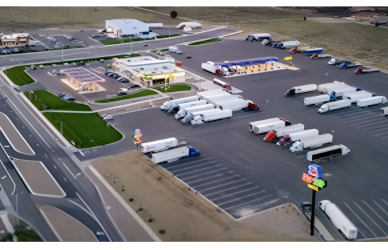For professional truck drivers, mastering the use of the Jake Brake isn’t just a skill—it’s a safety imperative and a game-changer when it comes to managing the rig’s speed on the road. In this comprehensive guide, we delve into everything you need to know about the Jacob’s Brake, from its mechanics to best practices, ensuring you’re equipped with the knowledge to optimize its use in your daily hauls.
What is the Jake Brake?
The Jake Brake, formally known as the Jacobs Engine Brake, is a supplemental braking system designed to assist in slowing down heavy vehicles, particularly on descents or in situations where traditional braking alone might be insufficient. Unlike the standard hydraulic brakes which rely on friction, the Jake Brake harnesses the power of the diesel engine itself to provide additional braking force.
How It Works
When engaged, the Jake Brake alters the engine’s operation to create resistance, effectively converting the engine into a power-absorbing air compressor. This process utilizes the compression cycle to slow down the vehicle, reducing the strain on the traditional braking system and extending the life of brake components such as pads and shoes.
When to Use It (and When Not to)
Proper utilization of the Jake Brake is crucial for safety and efficiency:
- Ideal Conditions: On dry, straight roads or in mountainous terrains where controlled speed reduction is necessary.
- Avoid on Ice: It’s not recommended for use on icy or extremely slippery surfaces due to potential loss of traction, which could lead to hazardous situations like jackknifing.
- Engine Warm-Up: Ensure the engine is adequately warmed up before engaging the Jake Brake to prevent mechanical strain.
- Noise Considerations: Be mindful of noise ordinances in residential areas or designated “No Jake Brake” zones, where its loud operation can disturb local communities.
Best Practices from Seasoned Drivers
Experienced truckers offer invaluable tips for maximizing the Jake Brake’s efficiency:
- Positioning: Always ensure your truck and trailer are straight before engaging the brake to maintain stability.
- Testing: Conduct a pre-trip brake test to verify functionality and responsiveness.
- Speed Control: Use lower strength settings in adverse conditions and higher settings on long descents to manage speed effectively.
- Maintenance: Regularly check oil levels and engine condition to prevent damage from extended use.
Personal Preferences and Practical Insights
Every driver develops their own approach to using the Jake Brake:
- Daily Use: Some prefer leaving it on throughout the day for convenience, while others activate it as needed for precise control.
- Mechanical Integration: For smoother shifting, coordinate Jake Brake use with clutch engagement to optimize gear changes.
- Noise Debate: Recognize the contentious issue of noise complaints versus safety benefits, emphasizing the tool’s necessity for safe driving practices.
The Jake Brake isn’t just a tool; it’s a lifeline for maintaining control and safety on the road. By understanding its mechanics, adhering to best practices, and respecting operational guidelines, truckers can leverage this technology to enhance their driving experience and safeguard their cargo. Whether navigating mountain passes or easing into a truck stop, mastering the Jake Brake ensures you’re equipped to handle any road condition with confidence.











